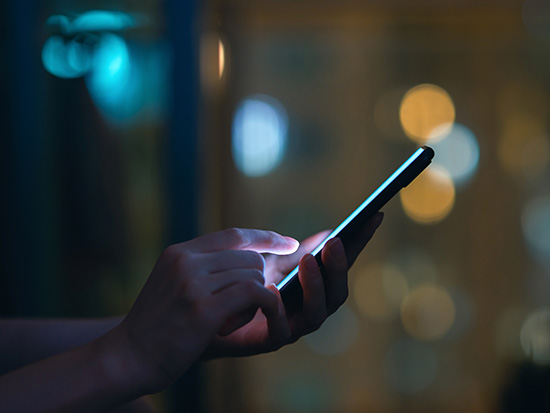Media contact: Anna Jones
 Social media has revolutionized how people communicate with each other. It allows users to stay in touch with friends and family and connect with different and diverse communities and cultures. But social media has its downsides, too: Information overload and glamorous images that might induce envy and comparison can produce a negative impact on overall mental well-being.
Social media has revolutionized how people communicate with each other. It allows users to stay in touch with friends and family and connect with different and diverse communities and cultures. But social media has its downsides, too: Information overload and glamorous images that might induce envy and comparison can produce a negative impact on overall mental well-being.
So, how can people manage their relationship with social media while also maintaining their mental health? Kaylee Crockett, Ph.D., a clinical health psychologist and clinical scientist in the University of Alabama at Birmingham’s Department of Family and Community Medicine, says that although there are some risks associated with social media, there are many strategies one can implement to maintain their mental health while using social media.
Assessing Risks and Benefits
“Social media carries both risks and benefits,” Crockett said. “It allows people to easily access different educational resources and forms of entertainment, it creates opportunities for networking with others, and it allows users to engage with social justice and activism. Unfortunately, social media use is also commonly linked with depression, anxiety, body dissatisfaction, disordered eating, insomnia, and other problems like trolling, cyberbullying and loss of privacy.”
With those risks in mind, Crockett says it is important to be mindful of how much time people are spending on social media and other apps. Social media users can monitor how much time they are spending on these platforms by reviewing the screen time data on their device or through some social media platforms directly. Crockett says users should ask themselves two questions: How much time are they spending on social media per day, and most importantly, are they OK with that number?
“Compare this to the time you are spending on other activities that matter to you,” Crockett said. “If you don’t like what you see, start setting limits for accessing your device or scheduling blocks of time for other activities that you care about.”
Crockett references a study recently published in Cyberpsychology, Behavior and Social Networking that shows scheduling a break from social media leads to significant improvements in well-being, depression and anxiety.
Build a Routine That Works for You
After finding out how much time they are spending on social media, users should try to pay close attention to what they are feeling when scrolling through social media.
“If you feel lonely, left out, anxious, jealous, mistreated, traumatized, angry or depressed while on social media, it may not be the best place for you,” Crockett said. “Consider deleting certain apps that are the most adverse. Set a ground rule that, if you already feel sad or stressed, do not default to social media. Consider another self-care activity instead.”
Self-care activities that can replace social media may include taking a walk outside, reading a book, journaling, practicing yoga or meditation, calling friends and family, inviting a friend to dinner, volunteering in the community, or joining community groups.
Finally, Crockett encourages people to ask themselves what role they want social media to play in their lives and consider steps they can take to make this happen.
Here are some tips she suggests for building a routine:
- For people who work in social media, focus on scheduling time to attend to social media duties and then putting social media away for the day.
- Set daily time limits on social media and stick to those limits. After the daily time limit is over, move on to other activities.
- Sharing a part of your story on social media platforms can be risky. Make sure to share in a way that is safe.
- Avoid social media use about an hour before bedtime, and do not scroll through social media while in bed. Excessive use of social media and electronic devices close to bedtime can negatively impact the quality of sleep and amount of sleep that one gets.
- When deciding which accounts to follow, consider the purpose the account serves and determine why that account is important to follow. If there is not a clear answer to these two questions, it may be time to unfollow those accounts.
Establishing healthy boundaries with social media platforms can help users tailor their social media experience to make it a healthier place for them.